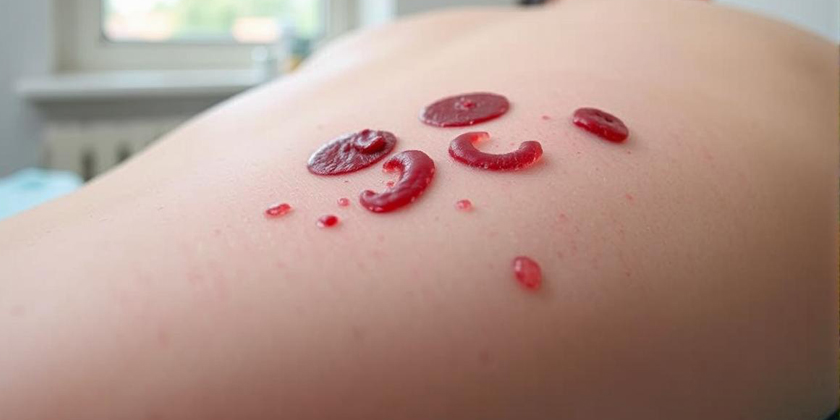The Complete Guide to Infectious Diseases and Wound Care Management
Infectious Diseases and Wound Care Management: A Comprehensive Guide
Why Infectious Diseases and Wound Care Matter
Millions of people each year suffer complications such as sepsis or delayed healing because proper **wound care** and **infectious disease management** prevent these issues. According to the CDC Surgical Site Infections report surgical site infections affect 2 to 4 percent of surgical procedures in the United States. Throughout my five-year career working alongside infectious disease experts I have learned that appropriate post-surgical treatment combined with prompt medical responses enhances survival rates and health results. The proper management of wounds helps minimize infection risks while promoting healing throughout recovery.
Common Infectious Diseases Affecting Wounds
1. Bacterial Infections
The most common source of wound infections comes from bacterial pathogens. Staphylococcus aureus and Pseudomonas aeruginosa are frequently identified pathogens in wound infections according to Mayo Clinic Wound Infections.
Causes of Bacterial Wound Infections:
- Contamination: Exposure to bacteria during injury or surgery.
- Poor Hygiene: Inadequate cleaning of wounds increases risk.
- Compromised Immunity: Diabetes or immunosuppression heightens susceptibility.
- Foreign Bodies: Sutures or debris can harbor bacteria.
2. Fungal Infections
Despite being rare, fungal infections can still develop in chronic wounds under humid conditions (Journal of Wound Care).
Causes of Fungal Wound Infections:
- Moisture: Damp wound dressings promote fungal growth.
- Antibiotic Overuse: Disrupts skin flora, allowing fungi to thrive.
- Chronic Wounds: Ulcers and burns create conditions that allow fungi to settle and grow.
3. Viral Infections
Herpes simplex viruses can occasionally infect wounds especially among patients with weakened immune systems according to the National Institute of Health.
Causes of Viral Wound Infections:
- Skin Breaks: Open wounds allow viral entry.
- Weakened Immunity: HIV or chemotherapy increases risk.
Symptoms of Wound Infections
Detecting infectious diseases and wound-related problems early helps manage these conditions effectively. Common signs include:
- Redness and Swelling: Inflammation around the wound site.
- Pus or Discharge: Yellow, green, or foul-smelling fluid.
- Pain or Warmth: Increased discomfort or heat in the area.
- Fever: When a systemic infection develops it can result in elevated body temperature according to Cleveland Clinic.
Effective Wound Care Management Strategies
1. Preventing Wound Infections
The first step to protect wounds from infections involves proper **wound care**.
- Clean Wounds Promptly: For wound cleansing use sterile saline or mild soap as recommended by the World Health Organization.
- Use Sterile Dressings: Consistent dressing changes help maintain a dry and clean environment for wounds.
- Monitor High-Risk Patients: Patients who have diabetes or obesity require heightened monitoring.
- Follow Aseptic Techniques: Especially during post-surgical care to minimize contamination.
2. Antibiotic Treatment
Antibiotic treatment is critical for confirmed infections:
- Topical Antibiotics: Target localized infections with either mupirocin or silver sulfadiazine (Mayo Clinic).
- Oral or IV Antibiotics: Culture results guide the application of oral or IV antibiotics for severe infections throughout the body.
- Avoid Overuse: The CDC guidelines recommend avoiding antibiotic overuse to prevent developing resistance.
3. Advanced Wound Care Techniques
For chronic or non-healing wounds:
- Debridement: Promote wound healing by eliminating dead tissue (Journal of Wound Care).
- Negative Pressure Therapy: Vacuum dressings promote better blood circulation while simultaneously lowering infection rates.
- Hyperbaric Oxygen Therapy: Hyperbaric Oxygen Therapy provides enhanced oxygen delivery which helps heal severe cases according to Cleveland Clinic.
FAQs About Infectious Diseases and Wound Care
Conclusion: Mastering Infectious Diseases and Wound Care
Proper management of infectious diseases and wound care helps prevent complications while enhancing wound healing. You can achieve better recovery outcomes by learning about wound infection causes while recognizing symptoms and using research-supported post-surgery care together with antibiotic medication. Through my partnership with wound care experts I demonstrate why proactive treatment and early intervention are vital. Stay vigilant to protect your health.



